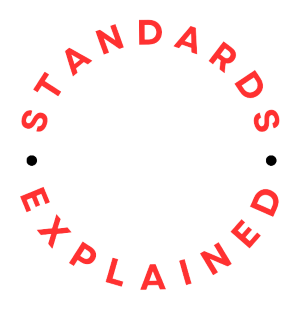ISO/IEC 20000-1:2018 Information technology — Service management — Part 1: Service management system requirements specifies what an organization needs to do to establish, implement, maintain, and continually improve a service management system (SMS). The requirements include the planning, design, transition, delivery, and improvement of services to meet the service requirements and deliver value. The standard is intended to be used by customers:
- seeking services and requiring assurance regarding the quality of those services;
- requiring a consistent approach to the service lifecycle by all its service providers, including those in a supply chain.
It is also intended to be used by organizations to:
- demonstrate its capability for the planning, design, transition, delivery and improvement of services;
- monitor, measure and review its SMS and the services;
- improve the planning, design, transition, delivery and improvement of services through effective implementation and operation of an SMS;
- provide training or advice in service management.
The standard was last reviewed and confirmed in 2023; therefore, this version remains current.
What does it cover?
| Introduction |
| 1 Scope |
| 1.1 General |
| 1.2 Application |
| 2 Normative references |
| 3 Terms and definitions |
| 3.1 Terms specific to management system standards |
| 3.2 Terms specific to service management |
| 4 Context of the organization |
| 4.1 Understanding the organization and its context |
| 4.2 Understanding the needs and expectations of interested parties |
| 4.3 Determining the scope of the service management system |
| 4.4 Service management system |
| 5 Leadership |
| 5.1 Leadership and commitment |
| 5.2 Policy |
| 5.3 Organizational roles, responsibilities and authorities |
| 6 Planning |
| 6.1 Actions to address risks and opportunities |
| 6.2 Service management objectives and planning to achieve them |
| 6.3 Plan the service management system |
| 7 Support of the service management system |
| 7.1 Resources |
| 7.2 Competence |
| 7.3 Awareness |
| 7.4 Communication |
| 7.5 Documented information |
| 7.6 Knowledge |
| 8 Operation of the service management system |
| 8.1 Operational planning and control |
| 8.2 Service portfolio |
| 8.3 Relationship and agreement |
| 8.4 Supply and demand |
| 8.5 Service design, build and transition |
| 8.6 Resolution and fulfilment |
| 8.7 Service assurance |
| 9 Performance evaluation |
| 9.1 Monitoring, measurement, analysis and evaluation |
| 9.2 Internal audit |
| 9.3 Management review |
| 9.4 Service reporting |
| 10 Improvement |
| 10.1 Nonconformity and corrective action |
| 10.2 Continual improvement |
Implementation
Implementing a Service Management System (SMS) in conformity with ISO/IEC 20000 Part 1 involves several key steps.
Organizational Context
- Determine the internal and external issues that are relevant to the organization’s purpose and strategic objectives.
- Identify key stakeholders and other interested parties that are relevant to the SMS.
- Assess the need to interface the SMS with other management systems and the resources required for this purpose.
Leadership and Commitment
- Obtain leadership commitment to service management within the organization.
- Establish a service management policy that aligns with the organization’s strategic objectives.
Scope and Context
- Determine the scope of the SMS.
- Describe and document the internal and external context, including legal and regulatory requirements related to service management.
Legal and Regulatory Compliance
- Identify and ensure compliance with relevant legal and regulatory requirements related to service management.
- Stay informed about changes in legislation that may impact service delivery.
Service Management Policy
Develop a service management policy that outlines the organization’s commitment to providing quality services.
Service Planning and Design
- Plan and design services based on customer requirements and organizational objectives.
- Define service levels, agreements, and key performance indicators.
Service Delivery Processes
- Implement processes for service delivery, incident management, problem management, change management, and other relevant processes.
- Ensure that processes are well-documented and followed consistently.
Resource Management
- Allocate resources effectively to support service delivery.
- Ensure that personnel are trained and competent in their respective roles.
Customer Relationship Management
- Establish effective communication and relationships with customers.
- Gather and analyze customer feedback to improve service quality.
Supplier Management
- Manage relationships with suppliers and third-party service providers.
- Ensure that suppliers adhere to agreed-upon service levels and standards.
Monitoring and Measurement
- Implement systems for monitoring and measuring service performance.
- Regularly assess the organization’s compliance with service management objectives and targets.
Data Analysis and Reporting
- Analyze service performance data to identify trends, areas for improvement, and opportunities.
- Prepare regular reports on service achievements and initiatives.
Incident and Problem Management
- Develop and implement processes for identifying, reporting, and resolving incidents and problems.
- Establish clear procedures for minimizing service disruptions.
Change Management
- Implement change management processes to control and manage changes to services and service assets.
- Assess and mitigate risks associated with service changes.
Documentation and Record-Keeping
- Develop and maintain documentation related to service management policies, procedures, and practices.
- Keep records of service levels, agreements, incidents, changes, and improvements.
Risk Management
- Identify and assess risks associated with service delivery.
- Develop strategies to manage and mitigate risks to service quality.
Continual Improvement
- Establish processes for continual improvement of service management practices.
- Regularly review and update service delivery processes based on feedback and changing requirements.
Internal Audits
- Conduct internal audits to assess compliance with service management policies and procedures.
- Ensure that audits cover relevant legal and regulatory requirements.
Management Review
- Conduct periodic management reviews to assess the overall performance of the SMS.
- Use review findings to make informed decisions and improvements.
In conclusion…
By following these steps, the organization can implement an effective SMS in conformity with ISO/IEC 20000-1. Regular reviews and updates are essential to ensuring the continued effectiveness and relevance of service management practices.
ISO/IEC 20000-1 can be purchased through the ISO.org website.














Comments (0)